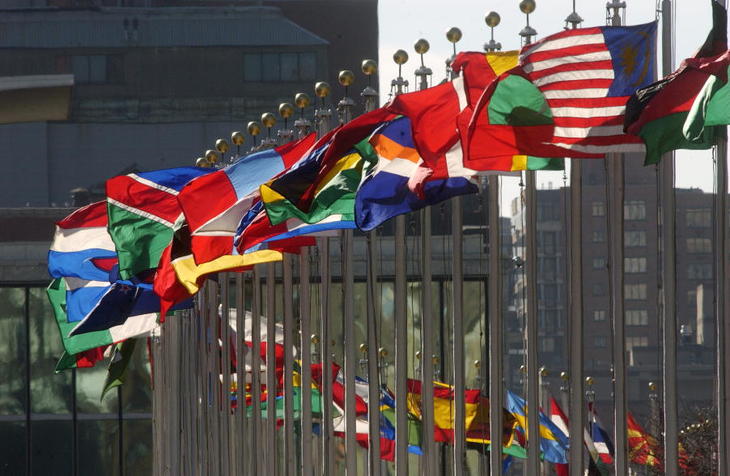
The CBD and Agenda 21 on Farmers' Rights - and the response of the FAO
The issue of Farmers' Rights was addressed during the negotiations leading to the Convention on Biological Diversity as well as in the Agenda 21, both adopted in 1992. These were important points of reference for later negotiations towards the International Treaty.
The Convention on Biological Diversity (CBD) was the first legally binding international treaty to address the conservation, sustainable use and equitable sharing of benefits derived from the utilization of biological diversity in general. It covers domesticated as well as undomesticated biodiversity. Until the International Treaty on Plant Genetic Resources for Food and Agriculture was adopted in 2001, it was the only legally binding international agreement pertaining to the management of crop genetic resources (the International Undertaking was not legally binding).
The CBD entails provisions which have similarities and parallels to the FAO resolutions from 1989 and the later International Treaty on Plant Genetic Resources for Food and Agriculture. With Article 8(j), the Parties to the CBD agree to respect, preserve and maintain traditional knowledge, innovation and practices, as far as possible, as appropriate and subject to their national legislation. Reference is made to indigenous and local communities embodying traditional lifestyles relevant for the conservation and sustainable use of biological diversity. The Parties also agree to promote the wider application of such knowledge, innovation and practices. There is no precise definition of the indigenous and local communities referred to. The Parties were encouraged at the Third Meeting of the Conference of the Parties III in 1996 to build capacity among indigenous and local communities for the in situ management of agricultural biological diversity (COP Decision III/11, paragraph 15f). It seems that the provisions on traditional knowledge and indigenous and local communities under the CBD and the provisions on Farmers' Rights, as spelled out in the agreed interpretations of the International Undertaking and in the International Treaty, have the potential to be mutually reinforcing. Nevertheless, the first initiative to assess potential synergies between the two regimes in this regard was not taken until 2002.
The CBD was opened for signing at the UN Conference on Environment and Development in Rio in 1992, and entered into force 29 December 1993. However, the text of the CBD had been adopted in Nairobi in May 1992 in the Nairobi Final Act of the Conference for the Adoption of the Agreed Text of the Convention on Biological Diversity. In this context, a resolution on the interrelationship between the CBD and the promotion of sustainable agriculture was adopted on 22 May (Resolution 3). This resolution deals particularly with the importance of plant genetic resources for food and agriculture, and urges that ways and means be explored to develop complementarity and cooperation between the CBD and the Global System for the Conservation and Sustainable Use of Plant Genetic Resources for Food and Sustainable Agriculture (ibid, paragraph 2), which was established under FAO and of which the International Undertaking was a central component. Finally, the resolution recognizes the need to seek solutions to two outstanding matters concerning plant genetic resources, one of which is "the question of Farmers' Rights" (ibid, paragraph 4).
Agenda 21 was adopted at UN Conference on Environment and Development in Rio de Janeiro, Brazil, in June 1992, as a dynamic programme, to be carried out by various actors according to the differing situations, capacities and priorities of countries and regions (Preamble, paragraph 1.6). Chapter 14 of Agenda 21 addresses the promotion of sustainable agriculture and rural development. In this context, it deals with the conservation and sustainable utilization of crop genetic resources (section G). These resources are essential to meet future needs for food, it states; and the primary objective for action is to safeguard the world's genetic resources while preserving them for sustainable use. Several necessary measures towards this end are listed, and actions to be taken by governments are indicated. Furthermore, the appropriate UN agencies and regional organizations are requested to take action in this regard (ibid, paragraph 14.60.a):
"Strengthen the Global System on the Conservation and Sustainable Use of plant genetic resources for food and agriculture by, inter alia, accelerating the development of the Global Information and Early Warning System to facilitate the exchange of information; developing ways to promote the transfer of environmentally sound technologies, in particular to developing countries; and taking further steps to realize Farmers' Rights."
In other words, the CBD and the Agenda 21 call on FAO to strengthen its work for the sustainable management of crop genetic resources, including the realization of Farmers' Rights. No indication is given with regard to the content of Farmers' Rights, however.
At its next session, in November 1993, the FAO Conference accordingly requested the FAO Director-General to provide a forum for negotiations for the adaptation of the International Undertaking in harmony with the Convention (Resolution 7/93). The negotiations should include the issue of realization of Farmers' Rights. The Commission on Plant Genetic Resources followed up with a mandate and a proposed process (CPGR-Ex1/94/3: Revisions of the International Undertaking: Mandate, context, background and proposed process, FAO: Rome, 1994). This marked the point of departure for the long-lasting negotiations that were to lead up to the adoption of the International Treaty on Plant Genetic Resources for Food and Agriculture in 2001. Farmers' Rights was one of several hot topics during the negotiations. We will not delve into all the different meetings and discussions that are relevant in this context, since that would exceed the limits of these articles, and they have been analysed elsewhere. Rather, we focus on the Global Plan of Action for the Conservation and Sustainable Utilization of Plant Genetic Resources for Food and Agriculture and the related State of World's Plant Genetic Resources report, which provides a good mid-term overview over the state of the discussion.